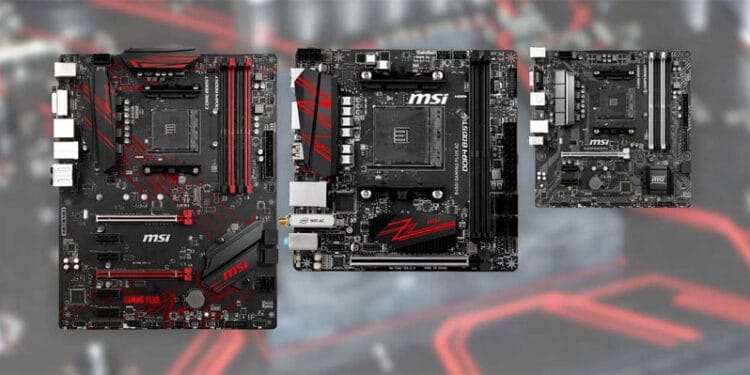One of the most important components of a computer is the motherboard, because it is on it that key components such as the processor, RAM, most connectors and much more are located. Motherboards are standardized and have different sizes, the so-called form factors; these include ATX, Micro ATX and Mini-ITX. Mini ITX is not in the scope of our article, so here we only discuss ATX Vs Micro ATX motherboards.
Standardization of form factors makes it easy to find the right processor, RAM, power supply, hard drive for your motherboard.
ATX Vs Micro ATX:-
Intel created the ATX form factor and first introduced it in 1995. For nearly 25 years, ATX has been the dominant form factor for home and office personal computers. ATX has the larger of the both motherboard sizes: 12 by 9.6 inches. Standards require all ATX motherboards to be this size. They also indicate the location of mounting points, I/O panel, power connectors, and other connection interfaces.
Not everyone needs an ATX-sized motherboard, especially if compactness is the goal. Therefore, Micro ATX boards were created, which have a size of 9.6 by 9.6 inches. Like larger ATX motherboards, the standard defines what all mounting points should be.
ATX motherboards are the most expandable. They usually have six (or fewer) PCIe slots for things like graphics, sound, and network cards. However, there are Extended ATX (or EATX) boards that have seven PCIe slots, but they are more for servers while Micro ATX can have up to four PCIe slots.
PCIe Slots:-
In addition to memory capacity, another huge contrast in these is how many PCIe slots they have to play. The PCIe slot is a high-speed hardware interface for connecting peripherals such as a graphics processing unit (GPU) and a sound card. PCIe slots for gaming devices and high performance work setups are considered quite important, which is why ATX typically has around 7 PCIe slots. However, specially designed mining motherboards are equipped with up to 19 PCIe slots. Apart from ATX, Micro-ATX usually comes with 4 PCIe slots, which is still enough for many scenarios.
Price:-
If we come to the price, you probably already realized that the price of these is quite different. Looking at them and understanding the limitations of each form, you will probably get the impression that Micro-ATX is the cheapest option. It is clear that ATX is the most expensive due to its compatibility, size and overall performance levels.
Building a High-Performance Gaming PC:-
Before choosing the motherboard form factor that will suit you best, you need to ask yourself strictly 2 questions. First, how powerful should this installation be? Most games these days can be run using a decent CPU and a unique good quality GPU. That being said, for the price and practicality, we highly recommend a Micro-ATX motherboard with a decent amount of RAM and the ability to run 4 PCIe slots simultaneously. The only scenario where Micro-ATX is not suitable is if you want to have a large number of PCIe outputs, such as multiple GPUs for mining. Also, if you’re looking to do some serious over-clocking, or just want something that adds to the overall build aesthetic, you’ll probably lean towards ATX.












